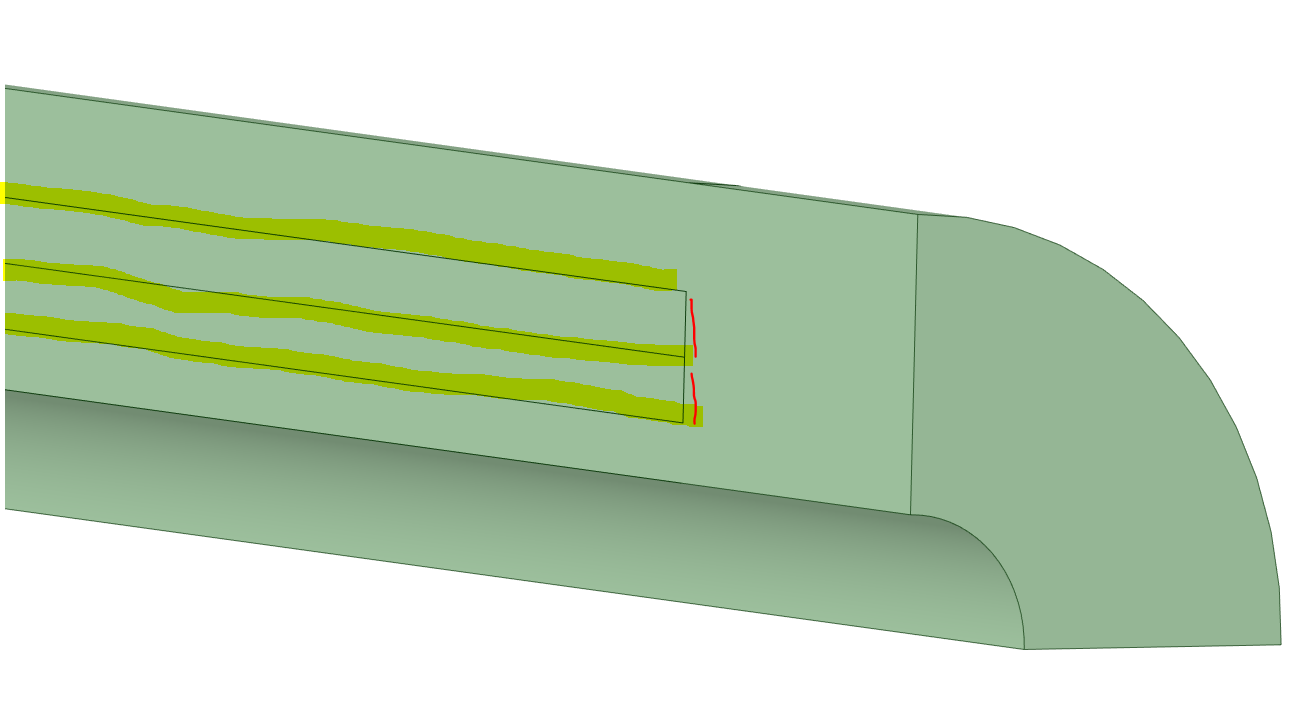-
-
February 24, 2022 at 4:14 pm
aitor.amatriain
SubscriberI want to add boundary layers in three walls (0 thickness) that separate three parts of my preliminary model
February 25, 2022 at 3:34 amKeyur Kanade
Ansys EmployeeThe issue is not very clear. The images look different.
Are you doing 2D or 3D ?
Regards Keyur
How to access Ansys Online Help Document
Guidelines on the Student Community
February 25, 2022 at 7:54 amaitor.amatriain
Subscriber3D, Fluent Meshing. The images are taken from the opposite sides.
The issue is that when the boundary layer approaches the walls marked in red, the number of elements reduces, and I want to have a constant number of elements.
March 1, 2022 at 2:06 pmaitor.amatriain
SubscriberIt is not possible to solve my issue?
March 1, 2022 at 2:24 pmRob
Forum ModeratorThe problem you'll then face is the poly cell at the "end" of the inflation layer. If you mesh with poly only then refine near the wall will that work for the flow field?
March 1, 2022 at 2:57 pmaitor.amatriain
SubscriberHi Rob, thank you for your help. I understand that what you propose is to mesh the geometry without the boundary layer, to then add the "boundary layer" by means of a local refinement. How can I do that in Fluent Meshing?
The only solution that I can think is to create a zone near the wall and then select in that zone a BOI or body size much lower than the other one. However:
All the elements will have the same length in all directions. I do not want this because in this case the cell count will increase dramatically.
I will loose the possibility of increasing the cell height as the cells are further from the surface.
March 1, 2022 at 3:20 pmRob
Forum ModeratorI was thinking of adaption in Fluent. Inflation is a good way to refine on continuous walls, it's less useful for baffles and where jet impingement/flow detachment occurs.
March 2, 2022 at 1:35 pmaitor.amatriain
SubscriberI do not use the (non dynamic) mesh adaption in Fluent because I had bad experiences in the past, but I understand that it is the best option.
Dou you have any recommendation to share about the implementation for this case in particular?
Thank you
March 2, 2022 at 2:10 pmRob
Forum ModeratorNo need to use dynamic adaption. If the flow is fairly stable run a few hundred iterations and then adapt a couple of cells from the wall & it's shadow.
March 2, 2022 at 2:27 pmaitor.amatriain
SubscriberMy answer was not very clear, sorry. I meant that I have used the dynamic mesh adaption (essential for some multiphase flows), but I have reduced experience with the "static" mesh adaption.
March 3, 2022 at 1:43 pmRob
Forum ModeratorNo worries. If you use the boundary adaption in 2022R1 I don't see any issues. We switched to PUMA and have since improved it significantly over the older hanging node and early PUMA implementation.
Viewing 10 reply threads- The topic ‘Problem with mesh in boundary layers’ is closed to new replies.
Ansys Innovation SpaceTrending discussionsTop Contributors-
3572
-
1193
-
1076
-
1063
-
952
Top Rated Tags© 2025 Copyright ANSYS, Inc. All rights reserved.
Ansys does not support the usage of unauthorized Ansys software. Please visit www.ansys.com to obtain an official distribution.
-
The Ansys Learning Forum is a public forum. You are prohibited from providing (i) information that is confidential to You, your employer, or any third party, (ii) Personal Data or individually identifiable health information, (iii) any information that is U.S. Government Classified, Controlled Unclassified Information, International Traffic in Arms Regulators (ITAR) or Export Administration Regulators (EAR) controlled or otherwise have been determined by the United States Government or by a foreign government to require protection against unauthorized disclosure for reasons of national security, or (iv) topics or information restricted by the People's Republic of China data protection and privacy laws.












